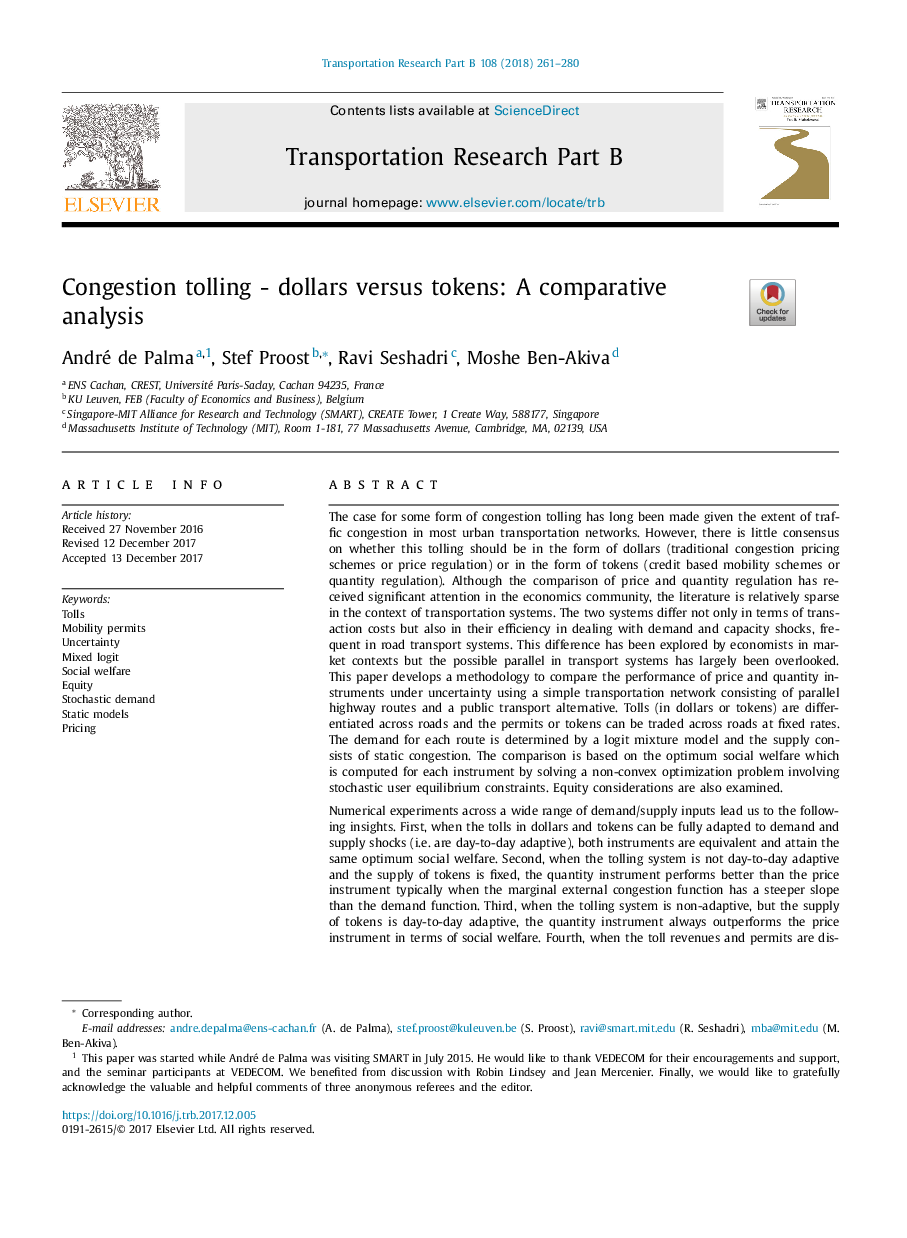| Article ID | Journal | Published Year | Pages | File Type |
|---|---|---|---|---|
| 7539235 | Transportation Research Part B: Methodological | 2018 | 20 Pages |
Abstract
Numerical experiments across a wide range of demand/supply inputs lead us to the following insights. First, when the tolls in dollars and tokens can be fully adapted to demand and supply shocks (i.e. are day-to-day adaptive), both instruments are equivalent and attain the same optimum social welfare. Second, when the tolling system is not day-to-day adaptive and the supply of tokens is fixed, the quantity instrument performs better than the price instrument typically when the marginal external congestion function has a steeper slope than the demand function. Third, when the tolling system is non-adaptive, but the supply of tokens is day-to-day adaptive, the quantity instrument always outperforms the price instrument in terms of social welfare. Fourth, when the toll revenues and permits are distributed uniformly, this has a positive equity effect but the quantity instrument is more equitable than the price instrument. In view of these results, we argue the case for quantity control in the presence of uncertainty and strongly convex congestion costs.
Related Topics
Social Sciences and Humanities
Decision Sciences
Management Science and Operations Research
Authors
André de Palma, Stef Proost, Ravi Seshadri, Moshe Ben-Akiva,
